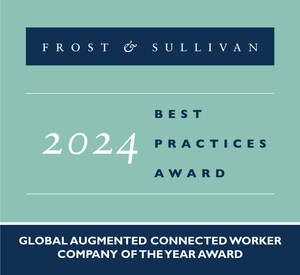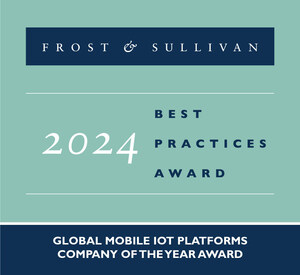Future of Hyperconnectivity Offers Billion-dollar Opportunities in the Connected Living Ecosystem
The number of connected devices across the globe is projected to increase from 30.4 billion in 2020 to 200 billion in 2030, says Frost & Sullivan
SANTA CLARA, Calif., March 4, 2021 /PRNewswire/ -- Frost & Sullivan's recent analysis, Future of Connected Living, reveals that the device-to-person ratio will exceed 20 to 1 by 2030 as the world enters the era of hyperconnectivity and catapults organizations' digital transformation. The number of connected devices globally is projected to increase from 30.4 billion in 2020 to 200 billion in 2030 at a compound annual growth rate (CAGR) of 20.7%. The convergence of connected cities, homes, and workplaces will result in ubiquitous connectivity and the emergence of new product applications, business models, technologies, platforms, and services.
The demand for connected living will be primarily driven by advanced software technology, widespread content streaming, and network integration. The rising demand is projected to quadruple smart and connected home penetration over the next five years to reach over 18% by 2025. Spending on the smart city sector is expected to reach $327 billion by 2025, up at a strong CAGR of 22.7%, and will lead to higher adoption of technologies such as artificial intelligence (AI) and 5G.
For further information on this analysis, please visit: http://frost.ly/5be
"The future home will become a 'central hub' for connected living. The demand for connected living solutions soared as a result of the COVID-19 outbreak in 2020, as it allows homes to evolve into on-demand workspaces and much more. Continued advancements in connectivity technologies such as cloud services, Internet of Things (IoT), video conferencing, mobility, robotics, and AI will create innovation frontiers for connected technology and service providers," said Vinay Venkatesan, Program Manager, TechCasting at Frost & Sullivan. "The convergence of 5G and Wi-Fi 6 will be a crucial enabler for connectivity as they will improve communication network speed, customer experience, and long-term cost efficiency."
Venkatesan added: "To succeed in the connected era, companies cannot do it alone. Enterprises need to establish new partnerships, engage with a broader ecosystem, and explore new business models to deliver a unique value proposition. While connected living drives digital resilience, it also carries major risks such as data insecurity and vulnerability to cyberattacks. Therefore, organizations are encouraged to develop a detailed cybersecurity strategy that will align with their goals and facilitate the provision of secure connected services to customers anywhere."
Connected device manufacturers and service providers that want to leverage growth opportunities must focus on these key areas:
- Digital Workflows: 70% of companies are expected to adopt a hybrid work structure by 2030. Digital workflows can eliminate manual, repetitive tasks to allow workers to focus on improving performance and value-add to customers. Companies must shift to an organizational approach to benefit from digital workflows, which will lead to optimized processes.
- Connected Services Ecosystem: With a digital-first strategy in place, governments must partner with connected service providers (CSPs) to deliver better social benefits, improve public service outreach, and raise awareness among citizens. Online services warrant collaboration between the government, tech companies, and CSPs to ensure seamless and effective integration and access to all citizens.
- Internet of Homes: Demand for contactless biometrics and voice control security technologies is on the rise as AI home virtual assistants become more universally accepted. Smart home product providers need to develop multi-functionality products that control multiple appliances and enable integration for ease and control. There is room for strategic partnerships between insurers, telecommunication companies, and online retailers to leverage the space.
- Multi-sided Platform Orchestrators: CSPs will shift to become data controllers and dataflow orchestrators, so they need to nurture an open ecosystem orchestrators built on relevance, scalability, experience, and trust. Network service providers can position themselves as trusted partners and build an ecosystem dedicated to the installation, control, and management of data across multiple environments.
Future of Connected Living is the latest addition to Frost & Sullivan's TechCasting research and analyses available through the Frost & Sullivan Leadership Council, which helps organizations identify a continuous flow of growth opportunities to succeed in an unpredictable future.
About Frost & Sullivan
For six decades, Frost & Sullivan has been world-renowned for its role in helping investors, corporate leaders and governments navigate economic changes and identify disruptive technologies, Mega Trends, new business models, and companies to action, resulting in a continuous flow of growth opportunities to drive future success. Contact us: Start the discussion
Future of Connected Living
K4AC
Contact:
Zuzana Zukarnain
Global Corporate Communications
E: [email protected]
http://ww2.frost.com
SOURCE Frost & Sullivan

Related Links
WANT YOUR COMPANY'S NEWS FEATURED ON PRNEWSWIRE.COM?
Newsrooms &
Influencers
Digital Media
Outlets
Journalists
Opted In






Share this article